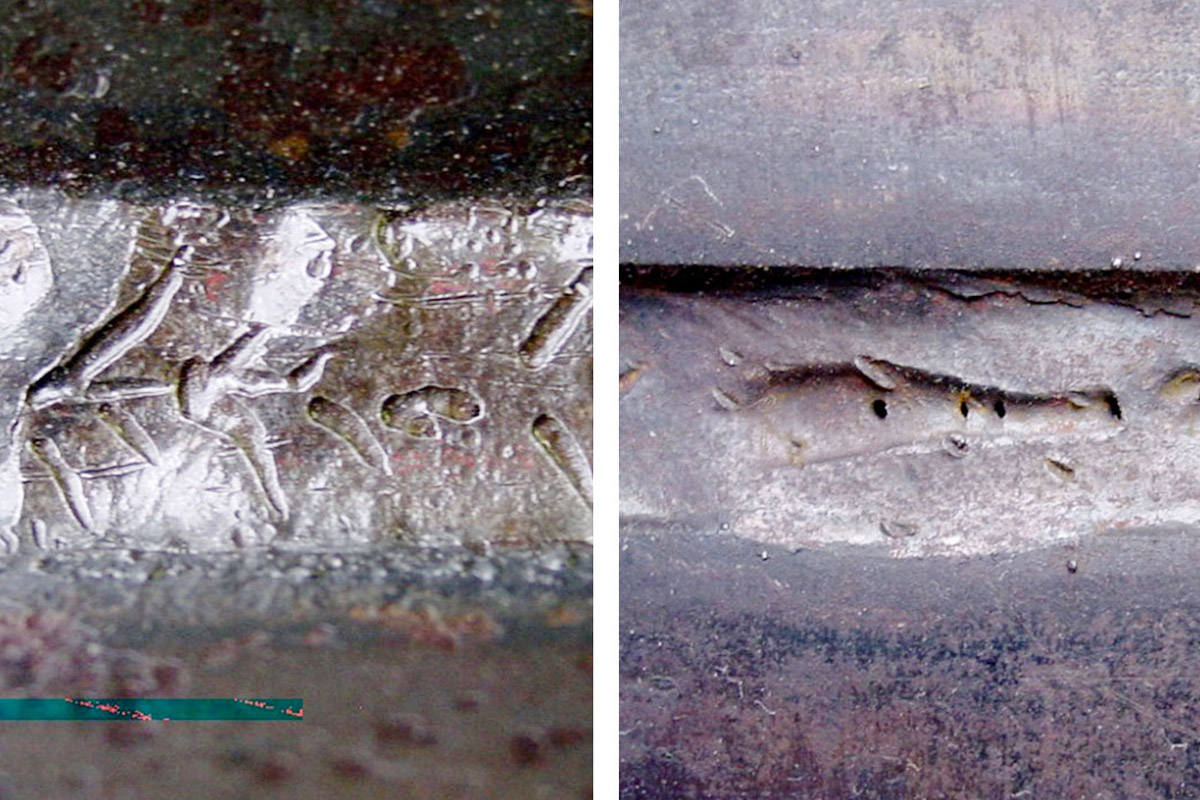The flux cored arc welding (FCAW) process is widely used in NZ for the welding of steel; the gas-shielded process variation for in the workshop, and the self-shielded option for site work.
While FCAW has a proven track record as a productive and reliable process, welds made with cored wires may occasionally have distinctive surface irregularities commonly referred to as “gas marks”, “worm tracks”, “chicken tracks”, or “hollow bead”.
These marks or grooves are caused by excessive levels of dissolved gases in the weld pool attempting to escape from the molten weld metal before it solidifies. Some of the gases do not completely migrate through the molten slag before it solidifies becoming trapped underneath the solid slag causing the imperfections on the weld surface.
This type of imperfection is more likely to occur with electrodes that produce a smaller weld pool and have a faster freezing slag system compared to a large weld pool with a slower freezing slag. Smaller diameter electrodes designed for all position welding (i.e. flat, horizontal, vertical and overhead) that are used at lower current levels will be more susceptible to gas marks than larger diameter, flat and horizontal only position electrodes that typically run at higher currents.
Other contributing factors may include:
- Excessive arc voltage. If the arc voltage is increased without any corresponding increase in wire feed speed, the arc length gets longer with a risk of excessive levels of nitrogen from the air being introduced into the arc. This extra nitrogen ends up in the molten weld metal, and then must escape.
- Moisture: sources include the air (high humidity), the plate surface (rust, contamination), the wire, or from the shielding gas.
- Contact tip to work distance (CTWD) too short.
- Shielding gas composition (gas-shielded electrodes). There can be a higher susceptibility when using argon/carbon dioxide mixtures than with 100% CO2 shielding gas. The spray arc type metal transfer with argon mixtures results in a smaller metal droplet size, resulting in a higher level of dissolved gases in the weld pool when other contributing factors are present.
These surface imperfections need to be carefully assessed as they may be a “cosmetic” imperfection, rather than a weld defect. Some marks do not extend beyond the weld surface and are readily removed by grinding, while others, especially when associated with pores and worm holes, may be judged as defects.
Welding supervisors need to aware of the possible causes of these imperfections and have procedures in place that will minimise the risks of gas marks occurring. Welding supervisors and welding inspectors need to be conversant with the acceptance levels of the applicable standards and be able to distinguish between acceptable imperfections and unacceptable defects.
HERA’s Welding Supervisor and Inspection courses cover the recognition and assessment of weld faults to the commonly used welding codes and standards.
Update shared by our General Manager Welding Centre Dr Michail Karpenko
